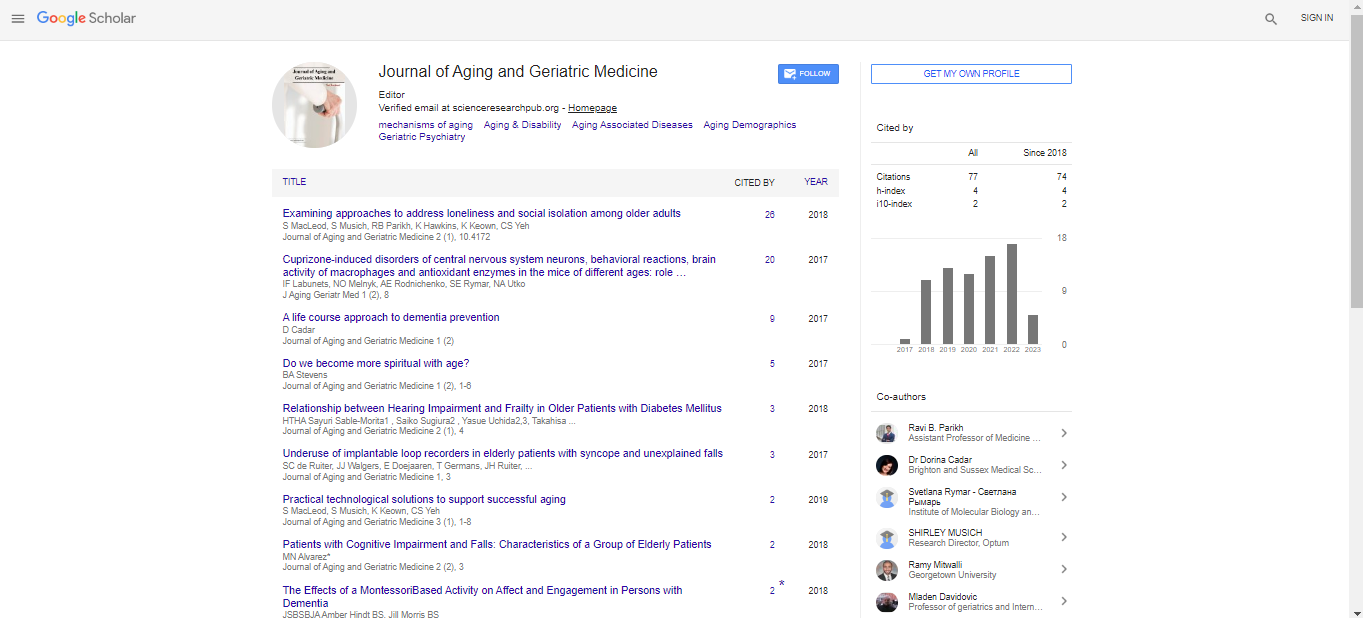Effects of concurrent training on muscle strength in older adults with metabolic syndrome: A randomized controlled clinical trial
Vania Agner, Garcia MC, Taffarel AA, Mourao CB, Da Silva IP, Da Silva SP, Peccin MS and Lombardi JR I
Federal University of Sao Paulo, Brazil
: J Aging Geriatr Med
Abstract
Metabolic syndrome is highly prevalent among older adults. Concurrent training comprises muscle strengthening and aerobic exercise. Determine the effects of a concurrent training program on muscle strength, walking function, metabolic profile, cardiovascular risk, use of medications and quality of life among older adults with metabolic syndrome. A randomised, controlled, blind, clinical trial was conducted in the city of Santos, state of São Paulo, Brazil, involving 41 male and female older adults. The participants were randomly allocated to a control group (n = 18) and intervention group (n = 23) and were submitted to the following evaluations: strength - 1 maximum repetition (1MR) for 12 muscle groups; the Six-Minute Walk Test (6MWT); blood concentrations of cholesterol and glucose; the use of medications; and the administration of the SF-36 questionnaire. The intervention was conducted twice a week over a total of 24 sessions of concurrent training: 50 min of strength exercises (40-70% 1MR) and 40 min of walking exercises (70-85% maximum heart rate).Increases in muscle strength were found in the upper and lower limbs in the inter-group analysis and a greater distance travelled on the 6MWT was found in the intervention group (p = 0.001). The intervention group demonstrated a reduction in the consumption of biguanides (p = 0.002). No changes were found regarding metabolic profile, cardiovascular risk or self-perceived quality of life. The findings of this clinical trial can be used for the prescription of concurrent training for older adults with metabolic syndrome for gains in muscle strength and walking distance as well as a reduction in the use of biguanides.
Biography
E-mail: agner.vania@gmail.com
 Spanish
Spanish  Chinese
Chinese  Russian
Russian  German
German  French
French  Japanese
Japanese  Portuguese
Portuguese  Hindi
Hindi 